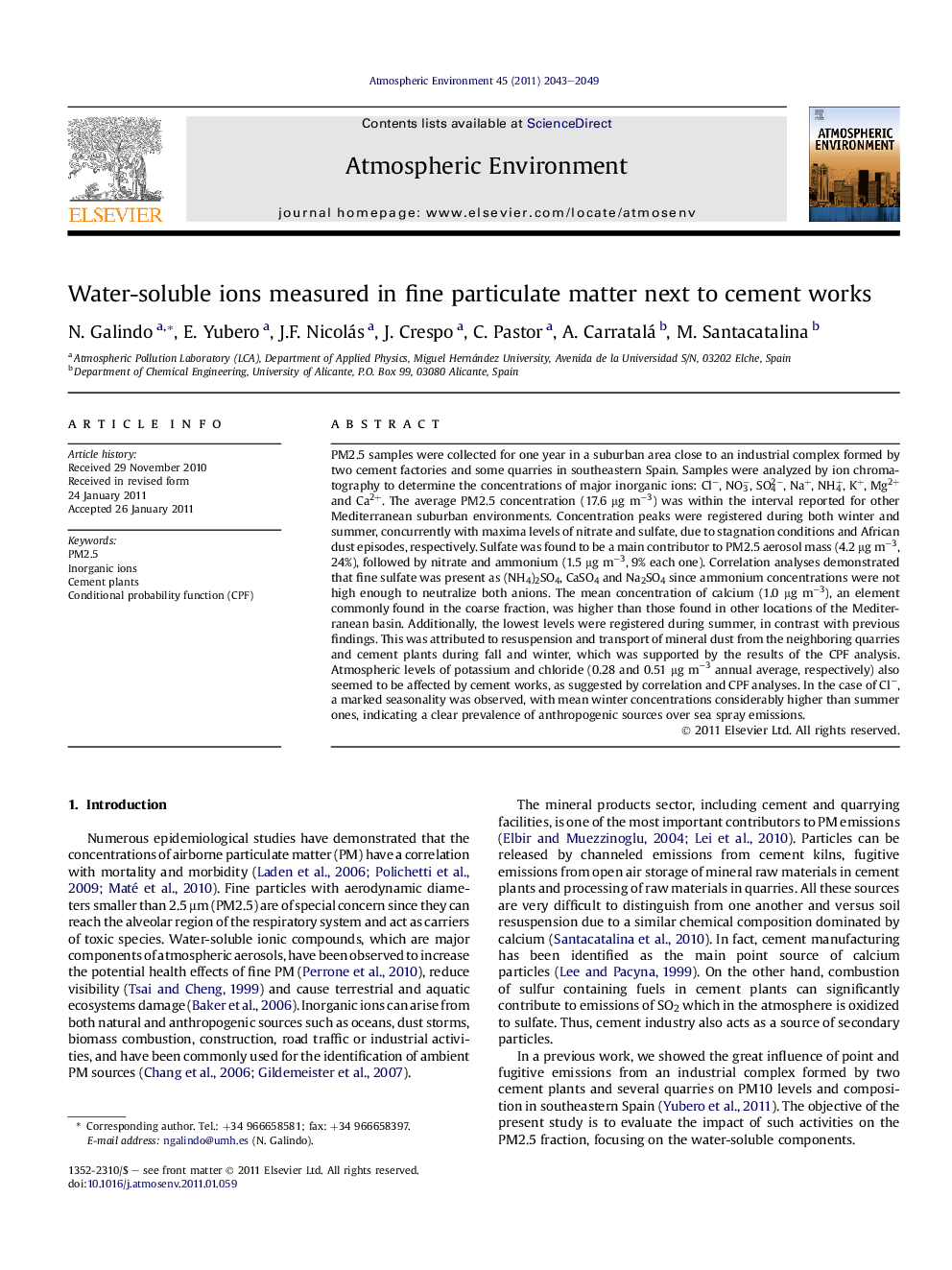| Article ID | Journal | Published Year | Pages | File Type |
|---|---|---|---|---|
| 4439913 | Atmospheric Environment | 2011 | 7 Pages |
PM2.5 samples were collected for one year in a suburban area close to an industrial complex formed by two cement factories and some quarries in southeastern Spain. Samples were analyzed by ion chromatography to determine the concentrations of major inorganic ions: Cl−, NO3−, SO42−, Na+, NH4+, K+, Mg2+ and Ca2+. The average PM2.5 concentration (17.6 μg m−3) was within the interval reported for other Mediterranean suburban environments. Concentration peaks were registered during both winter and summer, concurrently with maxima levels of nitrate and sulfate, due to stagnation conditions and African dust episodes, respectively. Sulfate was found to be a main contributor to PM2.5 aerosol mass (4.2 μg m−3, 24%), followed by nitrate and ammonium (1.5 μg m−3, 9% each one). Correlation analyses demonstrated that fine sulfate was present as (NH4)2SO4, CaSO4 and Na2SO4 since ammonium concentrations were not high enough to neutralize both anions. The mean concentration of calcium (1.0 μg m−3), an element commonly found in the coarse fraction, was higher than those found in other locations of the Mediterranean basin. Additionally, the lowest levels were registered during summer, in contrast with previous findings. This was attributed to resuspension and transport of mineral dust from the neighboring quarries and cement plants during fall and winter, which was supported by the results of the CPF analysis. Atmospheric levels of potassium and chloride (0.28 and 0.51 μg m−3 annual average, respectively) also seemed to be affected by cement works, as suggested by correlation and CPF analyses. In the case of Cl−, a marked seasonality was observed, with mean winter concentrations considerably higher than summer ones, indicating a clear prevalence of anthropogenic sources over sea spray emissions.
Research highlights► The influence of cement works on PM2.5 and inorganic ions has been investigated. ► Correlation and CPF analyses provided information about sources of PM2.5 ions. ► An effect of these activities on fine Ca2+ levels and its seasonal cycle was found. ► Sulfate levels could have been affected by the cement works at a regional scale.
